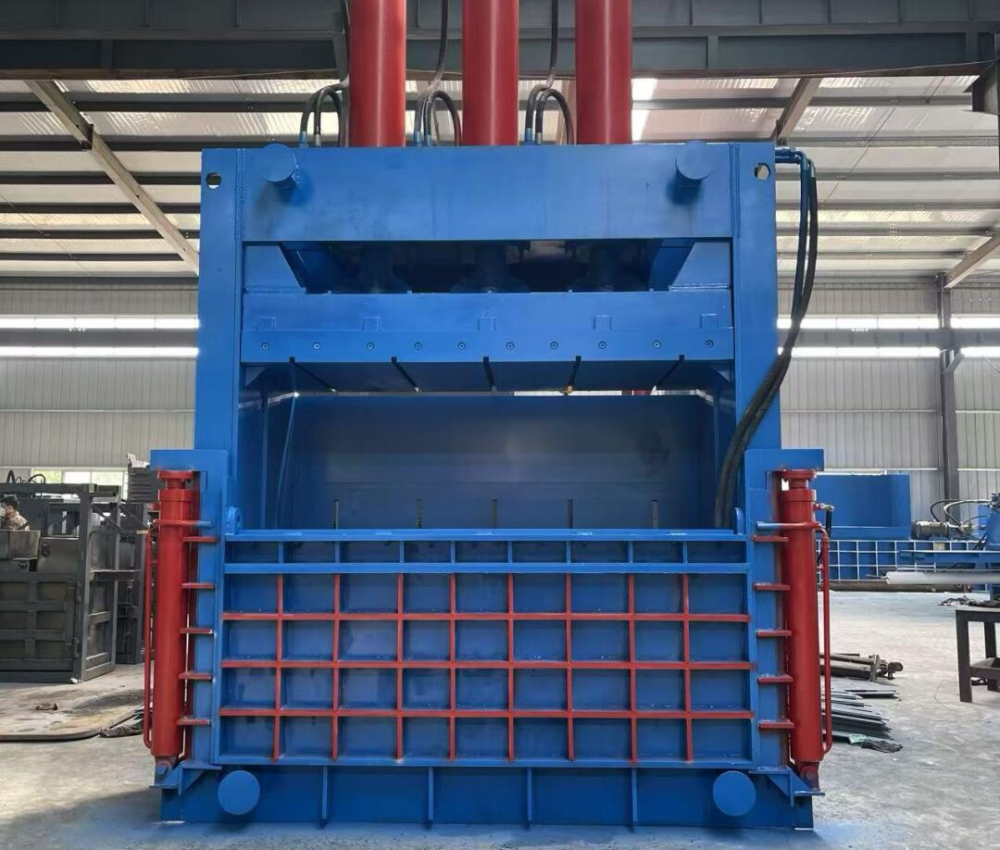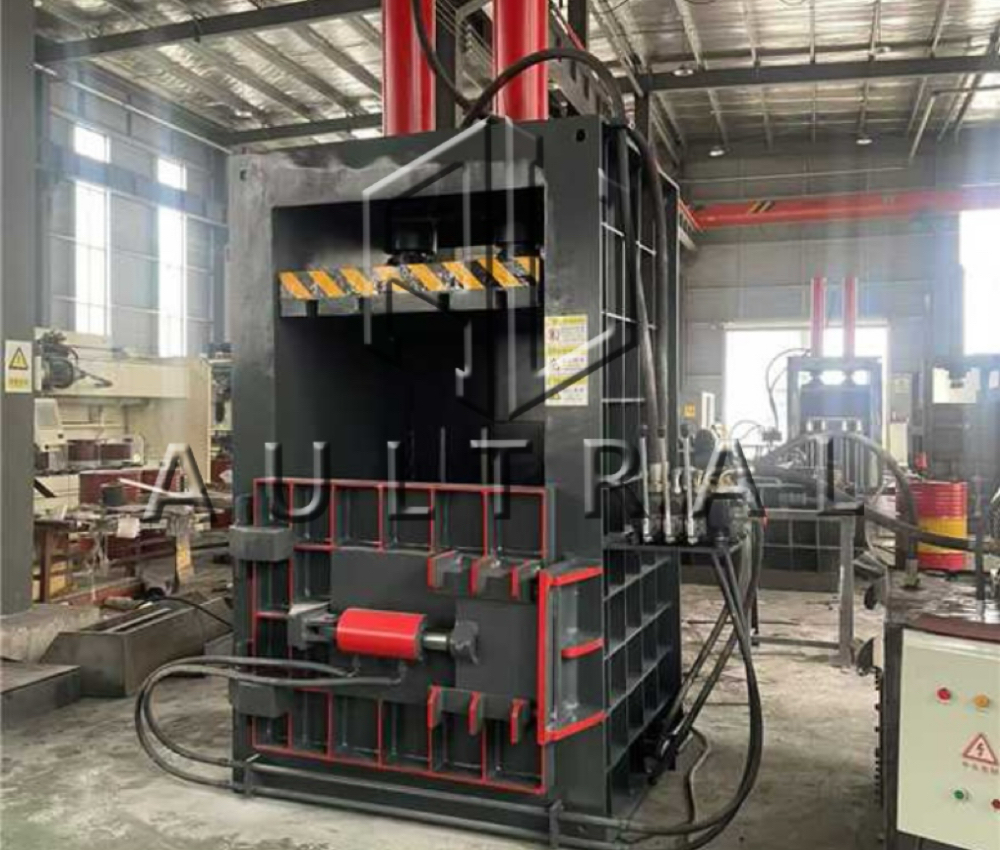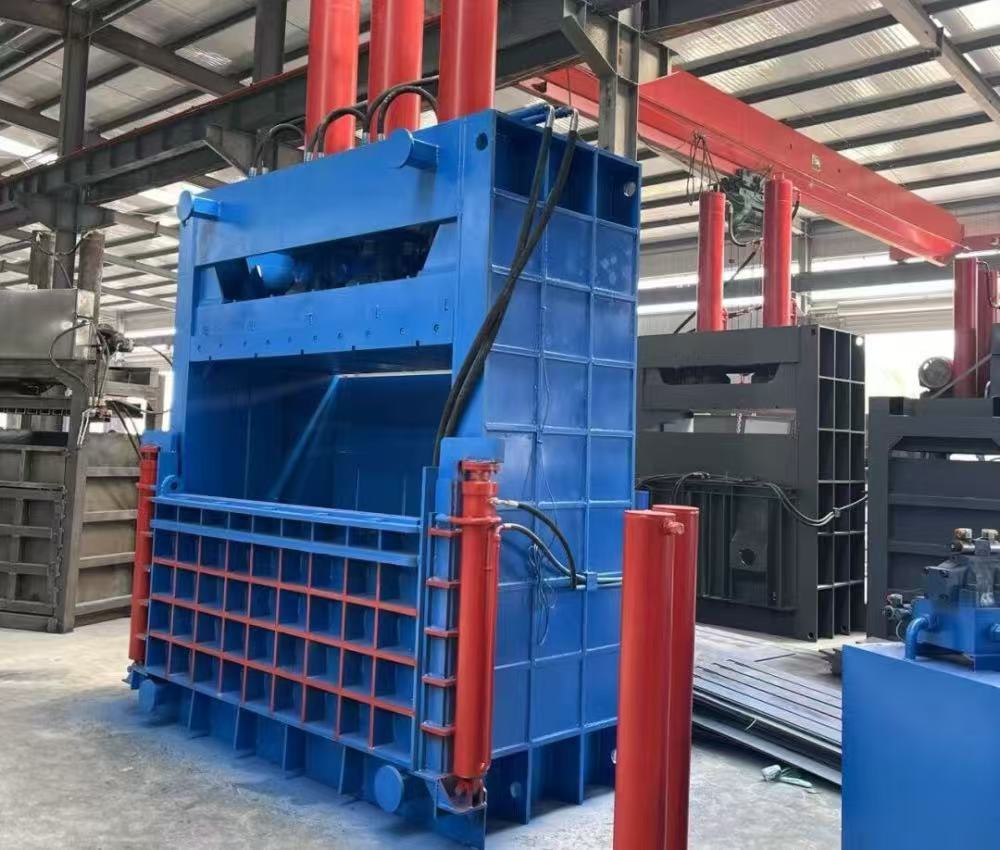What Is A Vertical Metal Baler Machine?

A vertical metal baler machine is a powerful hydraulic press designed to compress scrap metal into dense, manageable bales. Unlike horizontal balers, this machine operates vertically, making it ideal for small to medium-scale recycling centers, workshops, and manufacturing plants.
It reduces the volume of scrap such as aluminum, copper, steel, and iron. By compacting loose materials into tight bales, it helps save storage space, lowers transportation costs, and increases the efficiency of recycling operations.
Why Use A Vertical Metal Baler Machine?

The demand for efficient metal recycling continues to rise due to increasing global emphasis on sustainability and cost savings. A vertical baler offers several advantages:
-
Space Efficiency – Its vertical design occupies less floor space, perfect for facilities with limited room.
-
Cost Reduction – Compressing scrap metal reduces hauling frequency and logistics costs.
-
Environmental Benefits – Recycling metal minimizes landfill waste and reduces mining of natural resources.
-
Revenue Generation – Compacted bales are easier to sell to recycling plants, often fetching better prices.
-
User-Friendly Operation – Vertical balers are relatively simple to use and maintain compared to large horizontal systems.
How Does A Vertical Metal Baler Work?

The machine works by applying hydraulic pressure to compress scrap into compact bales. The process involves three key steps:
-
Loading – Scrap metal is placed into the compression chamber manually or using a small loader.
-
Compressing – The hydraulic ram pushes down vertically with immense force, reducing the material’s size.
-
Ejecting – Once the bale is formed, it can be ejected manually or automatically depending on the model.
This simple yet effective mechanism allows operators to handle different types of scrap metals quickly and safely.
Key Applications Of Vertical Metal Balers
Vertical metal balers are widely used in:
-
Scrap Yards – For compressing ferrous and non-ferrous metals.
-
Metal Fabrication Shops – To manage offcuts, shavings, and waste efficiently.
-
Automotive Workshops – For compacting used parts, engines, and metal scraps.
-
Recycling Centers – To prepare metals for resale or processing.
-
Manufacturing Facilities – For handling production waste.
Step-By-Step Guide On How To Use A Vertical Metal Baler
Operating a vertical baler is straightforward, but following the correct steps ensures efficiency and safety.
-
Prepare The Material – Remove hazardous contaminants such as oil, paint, or plastic coatings.
-
Load The Chamber – Place metal scraps evenly into the baler chamber.
-
Close The Door – Secure the chamber door to prevent accidental spillage.
-
Activate The Hydraulic System – Press the start button or use the control lever to begin compression.
-
Wait For The Compression Cycle – The hydraulic ram applies downward pressure until the preset bale size is reached.
-
Eject The Bale – Depending on the model, release the bale manually or through automatic ejection.
-
Store Or Transport The Bale – Place the compacted bale in the storage area or load it directly for shipping.
Safety Tips For Operating A Vertical Metal Baler
-
Always wear protective gloves, goggles, and steel-toed boots.
-
Never overload the chamber beyond its rated capacity.
-
Keep hands and tools away from the compression area during operation.
-
Regularly inspect hydraulic systems for leaks.
-
Ensure proper training for all operators.
How To Choose The Right Vertical Metal Baler Machine
Selecting the right baler requires evaluating several factors:
1. Type Of Metal Waste
Different metals vary in hardness and density. A baler designed for aluminum cans may not be suitable for heavy steel scraps. Determine your primary material before selecting a machine.
2. Processing Capacity
Consider how much scrap you need to compress daily. Small workshops may need a baler with 10–20 tons of pressure, while larger facilities might require 50–100 tons.
3. Bale Size And Weight
Check if the bale dimensions match your storage and transportation requirements. Standard bale sizes often range from 400 × 400 mm to 800 × 600 mm.
4. Manual Vs. Automatic Ejection
Manual ejection systems are cost-effective for small operations, while automatic ejectors save labor time in larger-scale facilities.
5. Power Supply
Ensure the machine matches your available power source. Some models run on single-phase electricity, while heavy-duty ones require three-phase.
6. Budget And Return On Investment
Balance cost with long-term savings. Investing in a high-quality baler often leads to lower maintenance costs and higher productivity.
7. After-Sales Service And Spare Parts
Choose a manufacturer that provides reliable support, training, and spare parts availability.
Common Mistakes To Avoid When Buying A Vertical Metal Baler
-
Ignoring Capacity Requirements – Buying an underpowered machine leads to inefficiency.
-
Overlooking Safety Features – Emergency stop buttons and safety locks are essential.
-
Focusing Only On Price – Low-cost machines may lack durability and increase maintenance expenses.
-
Not Checking Certifications – Machines with CE or ISO certifications ensure compliance and reliability.
Advantages Of Using Vertical Metal Balers Compared To Other Solutions
-
Smaller footprint compared to horizontal balers.
-
Lower initial investment cost.
-
Easier installation and maintenance.
-
Versatile use across multiple industries.
-
Effective for small to medium scrap volumes.
Future Trends In Metal Baling Machines
The future of vertical balers includes:
-
Smart Monitoring Systems – Real-time data tracking for efficiency and maintenance.
-
Energy-Saving Hydraulics – Lower electricity consumption with advanced technology.
-
Customizable Designs – Machines tailored for specific industries.
-
Automation Integration – Linking balers with conveyors and sorting systems.
Frequently Asked Questions About Vertical Metal Baler Machines
1. Can A Vertical Metal Baler Handle All Types Of Metals?
Not all vertical balers are suitable for every metal. Softer metals like aluminum and copper are easier to compress, while heavy steel may require a more powerful hydraulic system. Always match the machine’s pressure rating to the type of scrap you process.
2. How Long Does A Vertical Baler Last?
With proper maintenance, a high-quality baler can last more than 10 years. Regular oil changes, hydraulic inspections, and timely replacement of wear parts ensure long service life.
3. Is A Vertical Baler Suitable For Large-Scale Operations?
Vertical balers are excellent for small to medium scrap volumes. For large recycling plants handling several tons per hour, horizontal balers or fully automatic systems may be more suitable.
4. What Maintenance Does A Vertical Baler Require?
Routine checks include inspecting hydraulic hoses, monitoring oil levels, tightening bolts, and cleaning the chamber. Preventive maintenance reduces downtime and repair costs.
5. Can I Customize The Machine?
Yes. Many manufacturers offer custom options such as bale size, chamber volume, and ejection systems. Choosing a tailored solution ensures maximum efficiency for your specific business needs.
Conclusion – Why A Vertical Metal Baler Is A Smart Investment
A vertical metal baler machine is a crucial investment for any business dealing with scrap metal. It not only saves space and reduces costs but also promotes sustainability by making recycling more efficient. By choosing the right model, businesses can improve productivity, enhance workplace safety, and generate additional revenue from compacted bales.
Whether you operate a small workshop or a large recycling center, the right baler can transform the way you handle metal waste.
